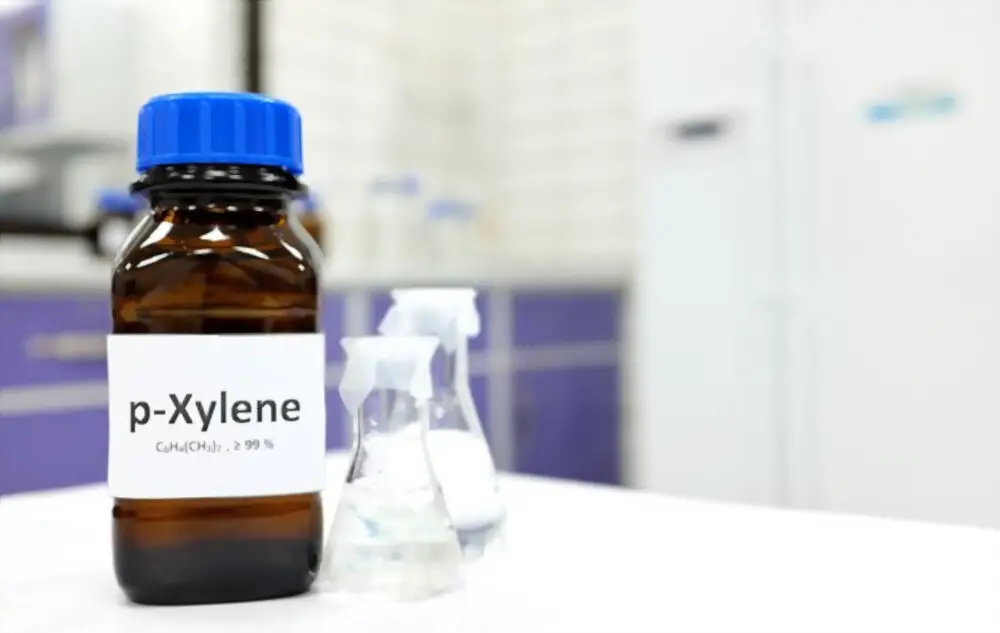Xylene is a chemical compound widely used in various industrial and commercial applications. It has been a subject of concern due to its potentially negative environmental impact.
Xylene is a volatile organic compound (VOC) that can contribute to air pollution and negatively affect human health.
Additionally, if it is released into the environment in large quantities, xylene can harm wildlife and plants. Xylene is found in gasoline, paint thinners, and some cleaning products.
When these products are used, xylene is released into the air, where it can be breathed in or absorbed through the skin.
Short-term exposure to high levels of xylene can cause headaches, dizziness, nausea, and confusion. Long-term exposure can damage the liver, kidney, and central nervous system.
As a result, many organizations and government agencies have regulations to limit the use and release of xylene to protect the environment.
What Is Xylene?
Xylene is a compound, which is used as a solvent and paint thinner. It is commonly found in common household products.
Xylene is also a component of gasoline. Although xylene is not considered very toxic, it can be harmful if inhaled or ingested. Xylene can cause liver and kidney damage, as well as cancer.
Sources of Xylene in The Environment
Xylene is a chemical compound in many industrial and commercial products. As a result, it can be released into the environment through various sources.
Some of the most common sources of xylene include:
Industrial Emissions
Xylene is used in many industrial processes, including petrochemicals, pesticides, and paints. As a result, it can be released into the air as a by-product of these processes.
Transportation
Xylene in gasoline and diesel fuels can be released into the air due to vehicle emissions. It can also be spilled or leaked while transporting gasoline and other fuel products.
Landfills And Waste Sites
Xylene can be present in many household and industrial products and can be released into the environment if these products are not disposed of properly.
Consumer Products
Xylene can be found in many consumer products, such as paints, solvents, and cleaning products.
When these products are used, they can release xylene into the air, leading to indoor air pollution.
Natural Sources
Xylene can also be found in trace amounts in natural sources such as oil, coal, and natural gas.
Health Effects of Xylene Exposure
There are a variety of health effects that can occur after exposure to xylene.
These effects can range from mild to severe, and they may not all be immediately apparent. Some of the more common health effects associated with xylene exposure include:
- Eye irritation
- Nose and throat irritation
- Respiratory problems
- Headaches
- Dizziness
- Nausea and vomiting
- Skin irritation and rashes
- Liver damage
- Kidney damage
- Central nervous system damage
Environmental Impacts of Xylene
Xylene is an aromatic hydrocarbon used as a solvent in many industries. It is also a component of gasoline and can be found in car exhausts.
Xylene has been classified as a human carcinogen by the International Agency for Research on Cancer.
Exposure to xylene can occur through inhalation, ingestion, or skin contact.
Acute exposure to xylene can cause irritation of the eyes, nose, and throat; drowsiness; dizziness; headaches; and confusion.
Chronic exposure to xylene has been linked to liver damage, kidney damage, and cancer. Xylene is released into the environment through industrial emissions and car exhausts.
It can also enter the environment through leaks from storage tanks and pipelines. Once in the environment, xylene can evaporate into the air or sink into groundwater.
The primary environmental concern associated with xylene is its impact on aquatic life. Xylene is highly toxic to fish and other aquatic organisms.
Studies have shown that xylene can cause liver damage, reproductive problems, and death in fish.
Xylene has also been shown to bio-magnify up the food chain, meaning that it becomes more concentrated as it moves up through the food chain.
This can seriously affect human health if we consume fish with high levels of xylene in their tissues.
Regulations on Xylene Usage
The Environmental Protection Agency (EPA) and the Occupational Safety and Health Administration (OSHA) regulate the use of xylene.
The EPA regulates xylene as a hazardous air pollutant under the Clean Air Act. OSHA has set occupational exposure limits for xylene to protect workers from health effects.
Alternatives to Xylene
There are many alternatives to xylene, depending on the intended use. For example, toluene can be used as a solvent in paint and varnish removers.
Methylene chloride can be used as a paint stripper. Naphtha can be used as a fuel or solvent. Ethyl acetate can be used as a nail polish remover.
Isopropyl alcohol can be used as a rubbing alcohol. What are the possible solutions to reduce xylene pollution?
Reducing xylene pollution can be achieved through a variety of means, including:
- Improving processes and/or operations that use or release xylene into the environment
- Modifying or replacing equipment that uses or emits xylene
- Implementing xylene management practices such as leak detection and repair, containment, and proper disposal
- Changing the type of xylene used in a process or product
- Switching to alternative products or processes that do not use or emit xylene
Conclusion
Xylene is a chemical used in various industrial and commercial applications, including as a solvent in the printing, rubber, and leather industries.
It is also found in gasoline and can be released into the environment through various means, such as accidental spills or during the production and use of gasoline.
Xylene is toxic to humans and the environment and can harm the nervous system, respiratory system, and other organs.
It can also contribute to air pollution and negatively impacts ecosystems and wildlife.
Therefore, it is important to take precautions to reduce exposure to xylene and minimize its release into the environment.







